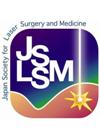All issues

Volume 15, Issue 3
Displaying 1-5 of 5 articles from this issue
- |<
- <
- 1
- >
- >|
-
Hiroaki SUZUKI, Katsunori MASUDA, Hisayuki FUKUTOMI, Akira NAKAHARA1994Volume 15Issue 3 Pages 1-6
Published: 1994
Released on J-STAGE: September 24, 2012
JOURNAL FREE ACCESSA high power diode laser system was recently developed in U. K. Being compact and portable, this laser system has a maximum power of 25W and the irradiation can be delivered through flexible fiber. Clinical evaluation was carried out to comfirm the efficacy and safety of this new laser system. Endoscopic laser treatments were performed with a total of 63 patients and safisfactory treatment results were observed in all cases. Especially in 9 cases of Esophageal stenosis due to the advanced Esophageal cancers, significant recanalizations were obtained. Since there was no negative side effect reported, this laser system was confirmed to be an efficient and safe treatment device.View full abstractDownload PDF (642K) -
Kensuke TSUSHIMA, Hiromasa KASHIMURA, Akira NAKAHARA, Hisayuki FUKUTOM ...1994Volume 15Issue 3 Pages 7-12
Published: 1994
Released on J-STAGE: September 24, 2012
JOURNAL FREE ACCESSMany lesion in the gastric mucosa have been reported to be caused by change of gastric mucosal blood flow. Several methods have been being used to investigate the mucosal blood flow, but these methods including a Laser Doppler methods can merely measure the pin-point area blood flow of the gastric mucosa. Therefor, the experiments have had to be carried out in many different positions to get two-dimensional information of gastric mucosal blood flow. If the blood flow of broad area of gastric mucosa can be simultaneously measured, further information of the cause og the gastric lesions must be available with less effort.View full abstractDownload PDF (1277K) -
Soichiro MIURA, Dai FUKUMURA, Iwao KUROSE, Masaharu THUCHIYA1994Volume 15Issue 3 Pages 13-20
Published: 1994
Released on J-STAGE: September 24, 2012
JOURNAL FREE ACCESSBy the use of recently development lazer Doppler perfusion imager, it is possible to determine blood distribution of tissue microcirculation two - dimensionally. Previously there have been several reports on cutaneous distribution of blood flow by using the apparatus. In this report, we investigated the spatial distribution of blood flow in gastroinetstinal tract of rats during the develop men t of ischemia-reperfusion injury. After removal of systemic blood, tissue perfusion of stomach was uniformely decreased. But after reperfusion, hypoperfused area gradually appeared in the middle-lower part of body portion which was well corresponding to the tissue injury induced by ischemia-reperfusion. It is concluded that this laser Doppler perfusion imager gives us valuable informations about heterogeneity of blood distribution in gastroinetstinal tissues.View full abstractDownload PDF (1505K) -
Masahiro SHIBATA, Keisuke KOSAKI, Shigeru ICHIOKA, Akira KAMIYA1994Volume 15Issue 3 Pages 21-26
Published: 1994
Released on J-STAGE: September 24, 2012
JOURNAL FREE ACCESSTo observe the microcirculation in a rather deep portion in the parenchymal organ, we have designed a new in vivo microscope by dual slit lazer beams illumination, in which the fluorescent lighte mitted from the tracer by these beams in the crossing area alone can be picked up. This microscope was applied to observe the tomographic image of microvasculature and to analyze the macromolecular permeability of single capillary in the anesthetized rabbit tenuisimus muscle. The obtained images make a high vertical zone selectivity of tomographic image from muscle surface to 200μm in depth. Furthermore, the quick macromolecular leakage can be observed in the single venular capillary region. It was concluded that present method is useful to quantify the microvasculature and capillary permeability under in vivo study.View full abstractDownload PDF (804K) -
Motomu MINAMIYAMA, Atsushi NAKANO1994Volume 15Issue 3 Pages 27-38
Published: 1994
Released on J-STAGE: September 24, 2012
JOURNAL FREE ACCESSSynchronous measurements of fluctuations of ear skin blood flow (SBF) and blood flow rate (FR) in a single arteriole in a rabbit ear chamber (REC) has been studied by utilizing laser Doppler flowmetry and a newly developed method, respectively. FR's were calculated with inside diameters (ID) and red blood cell velocities (RBCV) in arterioles in the REC. ID and RBCV were simultaneously measured by a video image analysis system and a dual - photometric method with a crosscorrelation analysis, respectively. Patterns of the flow motion of SBF and FR during vasomotion were classified into the following two oscillations types. One type was relative high frequency and small amplitude oscillations. Another type was low frequency and large amplitude oscillations. Low frequency oscillations superimposed on high frequency oscillations. When we observed high frequency oscillations, there was a poor correlation between SBF and FR. When low frequency oscillations of FR was only showed, we observed a clear correlation between SBF and FR. We suggest that high frequency oscillations to be local non-neurogenic vasomotion and low frequency oscillations to be pure neurogenic origin.View full abstractDownload PDF (1480K)
- |<
- <
- 1
- >
- >|